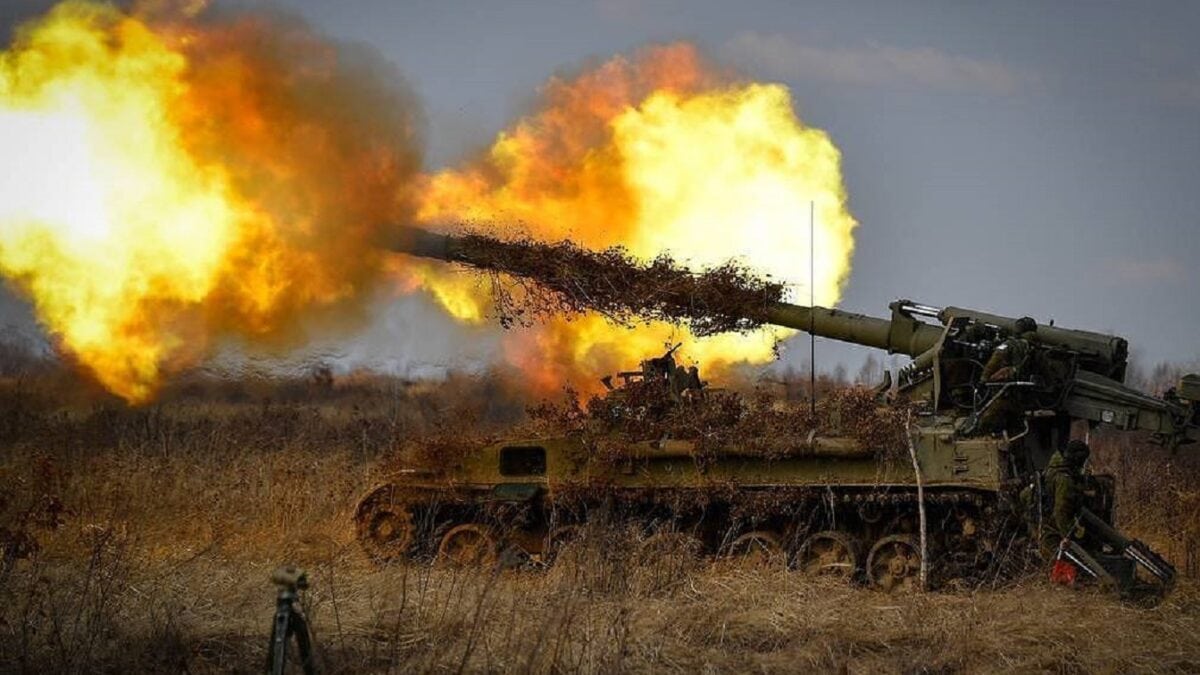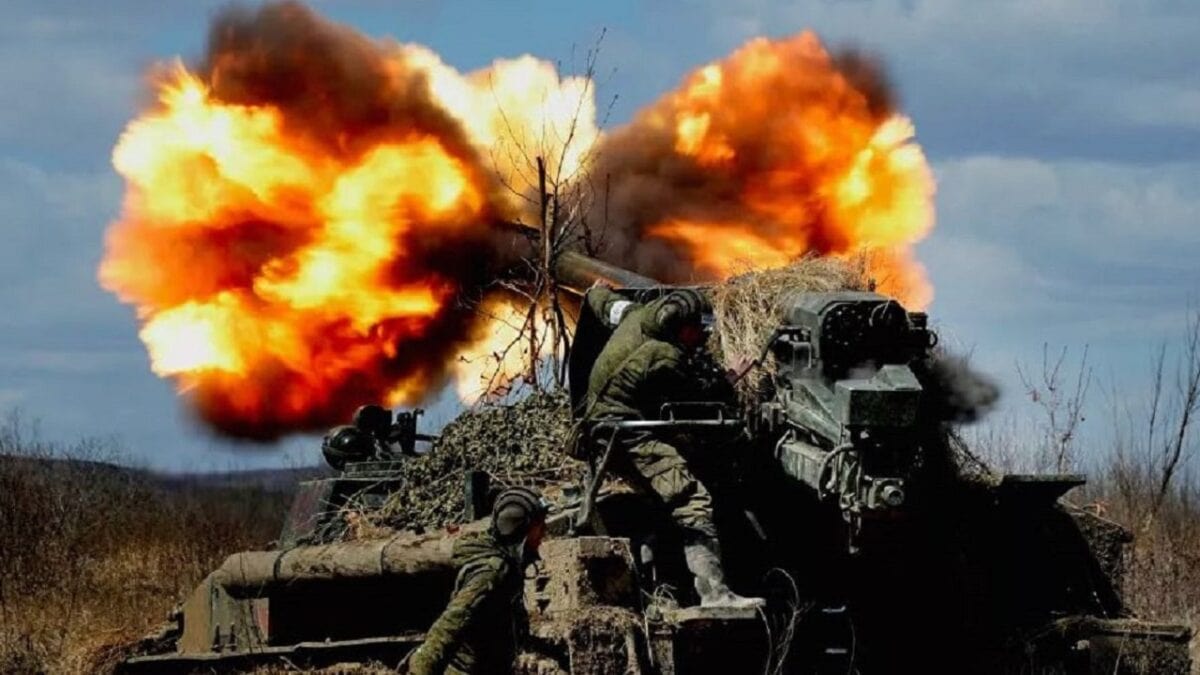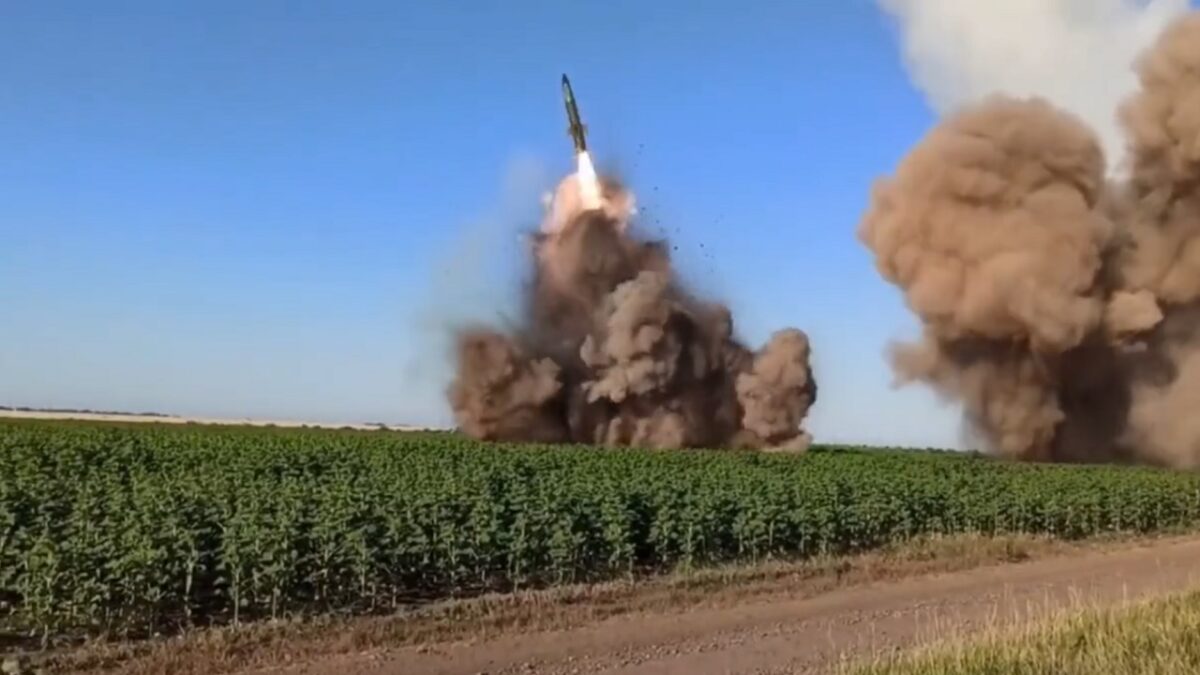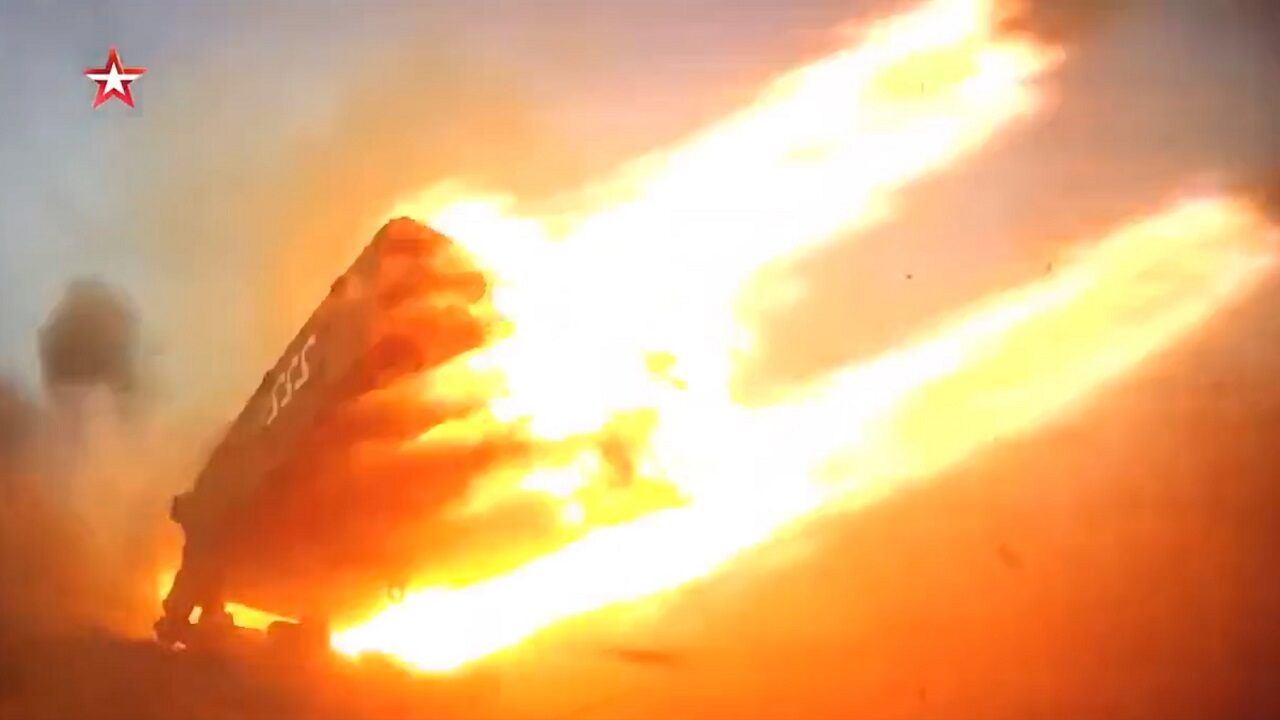A report published by the UK-based Royal United Services Institute (RUSI) think tank reveals fascinating new details on Russian artillery tactics gleaned from in-person interviews of Ukrainian soldiers by military analysts Jack Watling and Nick Reynolds.
While the report deserves reading in full here, the article highlights key findings regarding Russia’s artillery-based way of war.
It’s no secret that after Russia’s ambitious early attacks met with disaster in February-March, starting in April Russia pivoted to an artillery-oriented style of attrition warfare in Eastern Ukraine, battering Ukrainian units with overwhelming shelling.
Watling observes: “The generally mediocre performance of Russia’s ground forces has been increasingly offset by their leveraging of massed artillery fires to facilitate a slow and methodical advance. Sustained bombardment has progressively displaced the local population and levelled the settlements and infrastructure that were being defended, forcing the Ukrainian military to abandon territory after it is devastated.
Massive bombardments gradually dislodged Ukrainian troops from the symbolically important cities of Severodonetsk and Lyschansk by the end of June, while making it impossible for Ukrainian forces to concentrate with adequate speed and numbers to effectively counterattack. Even more ominously, Watling estimates Ukrainian personnel losses may now be approaching parity with Russia’s.
The silver lining is that Ukrainian units have repeatedly avoided encirclement and annihilation—part of Moscow’s original objectives in Donbas—through timely and relatively orderly withdrawals, and actually gained ground around Kherson in southern Ukraine.
Russian artillery has an over 3:1 firepower advantage
Russia doesn’t actually have a huge quantitative advantage in combat troops compared to Ukraine (because it’s not fully mobilized)—but it does have much more artillery, and is generating a lot more artillery fires.
According to the report, Russian howitzers are expending 20,000 shells daily on average, compared to 6,000 fired by Ukraine. The ratio for rocket artillery and ballistic missiles launches is even worse. And Ukraine still risks exhausting its supply of Soviet-standard 152-millimeter shells even faster than Russia does.
Russian artillery remains more centralized than expected.
Russia’s military was thought to have decentralized much artillery into its key tactical unit, the tank or infantry battalion tactical group (BTG), thought to integrate a powerful (and theoretically more responsive) complement of 1-3 artillery batteries.
But according to the study, BTGs in practice often have only a modest number of mortars and older howitzers. Instead, brigade- and divisional command echelons jealously retain control of more modern artillery assets in centralized ‘artillery tactical groups.’
Furthermore, artillery in BTGs has been saddled with shockingly poor communications architecture, compelling units to verify fire missions via un-encrypted civilian cell phones, resulting in a ponderous ‘kill-chain’.
The result, per the report: “…Russian artillery has largely operated independently from – rather than in close support of—its maneuver elements [ie. tanks and infantry], with supportive fire missions having long delays.”

Russian Artillery Firing. Image Credit: Creative Commons.
Russian artillery becomes much more effective when linked to drones.
Prior to 2022, Russia’s military was perceived to have developed a Western-style “reconnaissance-fires complex” where forward drone surveillance assets (especially Orlan-10 surveillance drones) could cue in precise and timely strikes, aided by digital fire direction/battle management systems.
This was not in evidence in the war’s early days due to rushed war preparations, but since then it’s clear Russia sometimes can implement this doctrine and deliver deadly precision attacks—it’s just not a widespread capability, due to shortages of adequately trained personnel and hardware, particularly communications systems and drones.
For example, when supported by drones, Russian artillery can adjust fires in real time to hit moving targets. Drone spotters also enable the deployment of small sub-units of just one or two guns to deliver effective strikes, rather than fully batteries of six guns.
But a lack of proficient personnel and hardware (particularly the larger Orlan-30 drone, which has a laser designator) has resulted in Russian units wasting supplies of laser-guided Krasnopol rounds in unguided barrages.
Russia assigns different roles to different types of artillery.
According to Watling, while Russia employs howitzers for attacking discrete point targets, multiple-rocket launcher systems are often used to bar the movement of Ukrainian forces by laying down a curtain of destruction in between them and their desired objective.
Counter-battery attacks targeting Ukrainian artillery, as well as Ukrainian drone operators, are the preserve of Tochka-U ballistic missiles and Russia’s longest-range guns controlled at the divisional level: the 2A65 Msta and 2A36 Giatsint towed-howitzers, their 2S19 and 2S5 self-propelled variants, and the 2S7M Malka 203-millimeter self-propelled howitzer.

2S7 Malka. Image Credit: Creative Commons.
Here’s how Russian artillery deploys
Ukrainian sources claim Russian artillery units typically deploy roughly one-third of their maximum firing range back from the frontline to insulate against enemy attacks.
Watling writes that “…mortars are largely positioned 1.5 km [1 mile] back from the forward line of own troops, artillery tactical groups subordinated to brigades 8 km [5 miles] back, and artillery tactical groups armed with longer-ranged systems dedicated to deep fires at 10–15 km [6-9 miles] back.”
Howitzer units usually deploy in a 100×300 meter area, with 20-40 meters between guns. Rocket-launcher units instead use a linear formation, with up to 150-meters separating each launcher truck.
The report also describes Russian units deploying ‘dummy’ artillery batteries of mostly damaged/destroyed guns to divert and absorb Ukrainian strikes.
Russia’s counter-battery game is slow—except when aided by drones.
Counter-battery artillery seeks to take out an opponent’s artillery, leveraging radars and acoustic sensors to trace incoming shellfire back to its point of origin. The faster that can be accomplished, the more likely counter-battery fire will catch the attacking battery before it can relocate.
But according to Watling & Reynolds, Russian counter-battery is slow, usually averaging 30 minutes to launch a counter-battery strike. That’s more than enough time for even towed artillery to fire, hitch up to trucks and get the hell out of dodge.
But when networked with a drone spotter, Russian guns can execute accurate counter-battery strikes in just 3-5 minutes. Only Ukraine’s most modern, Western-supplied mobile artillery systems can shoot-and-scoot fast enough to avoid that. As a result, Ukrainian artillery batteries regularly deploy portable air defense missiles—preferably optically-guided Starstreak/Marlet missiles—to shoot down drones.
Watling notes Russia has made surprisingly extensive, even wasteful, use of Tochka-U ballistic missiles for counter-battery strikes, noting an incident when three of these powerful but imprecise weapons were fired at a single Ukrainian M109 Paladin self-propelled howitzer—causing only light damage.

Tochka missile system. Image Credit: Creative Commons.
Russian artillery doesn’t shoot-and-scoot.
While the report notes Ukrainian units report can “consistently evade” Russian counter-battery fire (at least when drones aren’t around), Russian artillery crews mostly didn’t move after firing—displacing only after having come under attack, ie. ‘take fire and then scoot.”
Ukrainian sources also claim Russian howitzers crews, when coming under shellfire, typically abandon their guns to seek cover—even when vehicle-mounted.
Ammunition supply is Russia’s Achille’s heel
Russia’s employment of artillery may lack finesse by Western standards, but it still has had a dominant role in facilitating the capture of key objectives and inflicted unsupportable casualties. How to tackle such a broadly destructive, if clumsy, behemoth?
Watling argues the key is to starve the beast, ie. “…the logistics burden posed by the transportation and stockpiling of the vast quantity of shells that allows Russia to continue to maneuver by fire.”
That’s because Moscow’s ground forces are infamously dependent on rail logistics to supply forces compared to Western armies, lacking adequate trucks and modern palletized load-lifting equipment.
Watling writes: “…ammunitions dumps at the divisional and brigade level are large, distinct, hard to conceal or defend, and slow to relocate…given the disparity in guns and the shortage of Russian precision fires, the fastest way to level the playing field is to enable Ukraine to strike Russian artillery logistics.”
While the report argues Ukraine has failed to systematically exploit this weakness, this arguably has changed, given a stunning succession of precision attacks on Russian ammunition depots deep behind the frontline in July.
These are made possible by Ukraine’s use of Western-supplied HIMARS and M270 rocket artillery systems, which can precisely attack targets nearly 50 miles away using GPS-guided rockets.
Such strikes could hamstring Russia’s artillery war, but only so long as Ukraine receives enough HIMARS/M270s and long-range Western howitzers quickly enough, and if NATO states adequately increase production of 155-millimeter shells so as to sustain deliveries to Ukraine. He also advocates the West streamlining the number of artillery types delivered to Ukraine to simplify the resulting “logistical nightmare” for Ukraine’s military, but that seems unlikely to happen given the distributed nature of Western aid to Ukraine.
Sébastien Roblin writes on the technical, historical, and political aspects of international security and conflict for publications including The National Interest, NBC News, Forbes.com, War is Boring and 19FortyFive, where he is Defense-in-Depth editor. He holds a Master’s degree from Georgetown University and served with the Peace Corps in China. You can follow his articles on Twitter.

